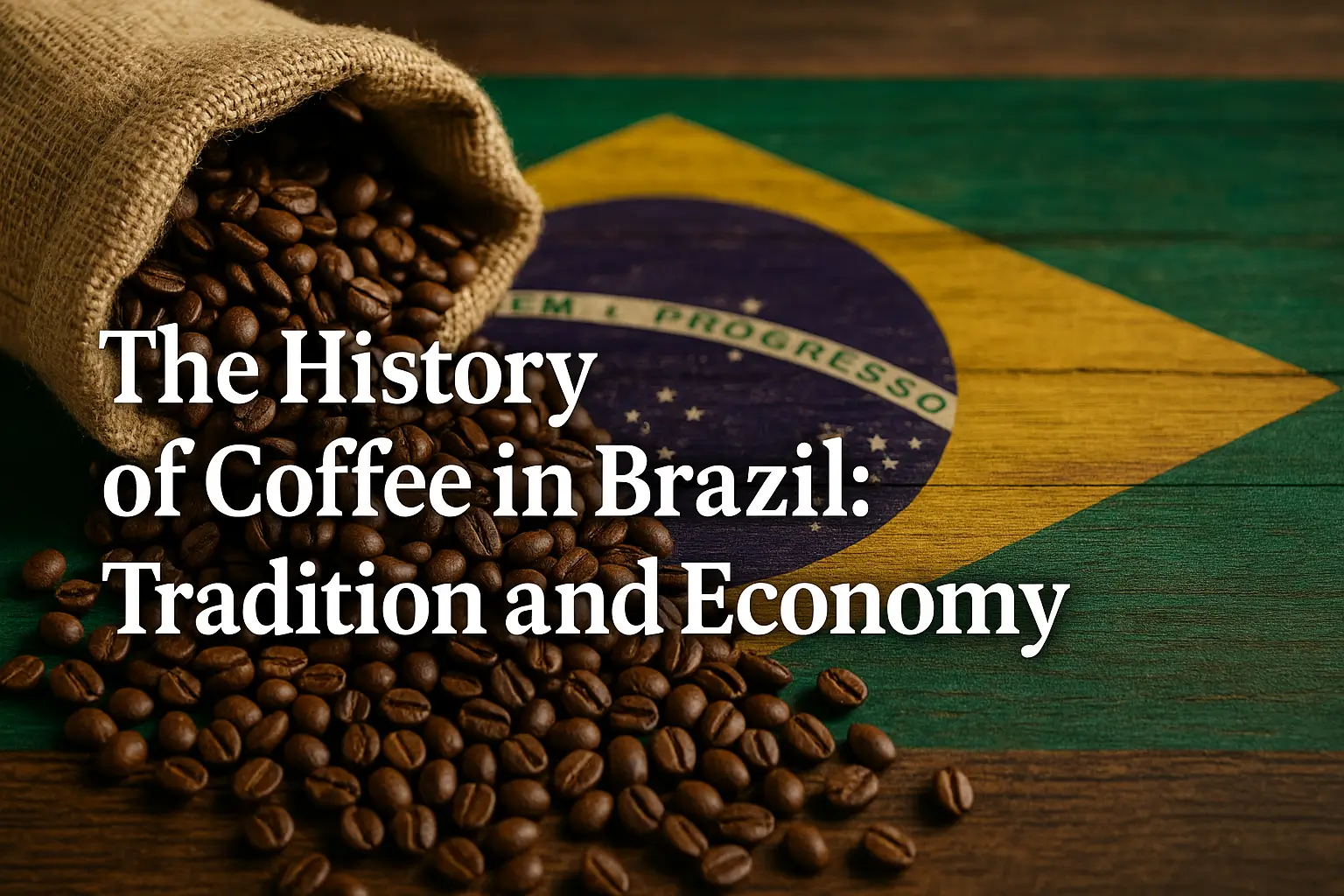Brazil is globally recognized as a coffee powerhouse—both in terms of production and cultural influence. But how did coffee become such a defining element of Brazil’s identity, and what role has it played in the country’s economy and history? In this article, we’ll explore the rich journey of coffee in Brazil, from its introduction in the 18th century to its status as the world’s largest coffee exporter today.
The Arrival of Coffee in Brazil
Coffee wasn’t always native to Brazil. It was introduced in 1727, during the colonial period, through a combination of espionage and luck. A Brazilian lieutenant, Francisco de Melo Palheta, smuggled coffee seeds from French Guiana under the pretense of a diplomatic mission.
These early seeds were planted in the northern state of Pará, but it was only when coffee cultivation spread to the southeastern regions, such as Rio de Janeiro, São Paulo, and Minas Gerais, that Brazil’s coffee boom truly began.
The 19th Century: Brazil Becomes a Coffee Empire
By the early 1800s, coffee plantations had expanded rapidly. Brazil’s climate, altitude, and soil proved ideal for coffee growing, especially in the southeastern highlands.
Key Developments:
- 1820s–1830s: Coffee surpassed sugar as Brazil’s main export.
- Mid-1800s: Brazil became the largest coffee producer in the world, a title it still holds.
- Late 1800s: Coffee accounted for over 60% of Brazil’s export revenue.
This boom led to the emergence of a powerful coffee elite known as the “coffee barons”, who played a significant role in both the economy and politics.
Labor and Slavery in Coffee Production
It’s essential to acknowledge the darker chapters of Brazil’s coffee history. Much of the early success was built on the backs of enslaved Africans, who provided the labor force for vast coffee plantations.
Slavery in Brazil was only abolished in 1888, making it the last country in the Western Hemisphere to do so. After abolition, many plantation owners turned to immigrant labor, particularly from Italy, Germany, and Japan.
Coffee and Urban Development
Coffee didn’t just transform rural plantations—it shaped entire cities. The wealth generated from coffee exports financed the construction of railways, ports, and urban infrastructure.
Cities Heavily Influenced by Coffee Wealth:
- São Paulo: Grew rapidly into an industrial and economic center.
- Campinas and Ribeirão Preto: Became known as coffee hubs in the interior of São Paulo.
- Rio de Janeiro: Benefited from coffee trade through its ports and banking system.
Coffee also played a role in the rise of Brazil’s financial system, with the creation of banks and institutions to manage international trade and credit.
Coffee in Brazilian Politics
During the Old Republic period (1889–1930), coffee had a direct influence on national politics. The political dominance of São Paulo (coffee-producing) and Minas Gerais (dairy-producing) became known as the “coffee with milk” alliance (café com leite politics).
This informal power-sharing agreement ensured that policies would favor the interests of the agricultural elite, particularly coffee producers.
Government Intervention and Coffee Valorization
As global coffee prices began to fluctuate, the Brazilian government stepped in to stabilize the market. In the early 20th century, programs of “coffee valorization” were implemented to prevent price crashes.
The government:
- Bought excess coffee to reduce supply
- Stored beans in warehouses or even destroyed them
- Worked with international players to coordinate price management
These efforts helped maintain Brazil’s position in global markets but also signaled the growing dependency on a single export commodity.
Modern Era: Mechanization and Diversification
In the second half of the 20th century, coffee farming in Brazil underwent significant transformation:
- Mechanization: Modern machinery reduced labor costs and increased efficiency, especially in the flatter regions of the Cerrado Mineiro.
- Technological innovation: Improved cultivation techniques, irrigation, and pest control led to higher yields.
- Specialty coffee movement: Brazil embraced the growing global interest in high-quality, traceable, and sustainably grown coffee.
Brazil Today: The World’s Coffee Leader
Brazil remains the largest coffee producer and exporter in the world, responsible for about one-third of global supply. The country produces both Arabica and Robusta (Conilon) beans, with Arabica dominating in quality and volume.
Key Coffee-Growing Regions:
- Minas Gerais: Known for mild and balanced Arabica coffees.
- São Paulo: Traditional powerhouse with high productivity.
- Espírito Santo: Major Robusta producer.
- Bahia and Rondônia: Emerging regions with specialty potential.
Brazil has also become a major player in the specialty coffee scene, with producers focusing on quality, sustainability, and unique flavor profiles.
Coffee in Brazilian Culture
Coffee is deeply embedded in Brazilian daily life. From the cafezinho (a small, strong, sweetened coffee served throughout the day) to elaborate brewing methods embraced by specialty cafés, coffee is more than a beverage—it’s a ritual.
Coffee culture in Brazil values hospitality, warmth, and social connection. Whether in a family home or a trendy coffee bar, sharing a cup of coffee is a gesture of welcome and friendship.
Final Thoughts: A Legacy Brewed in Every Cup
The story of coffee in Brazil is one of transformation, resilience, and identity. What began as smuggled seeds centuries ago became a national symbol and economic backbone. Today, Brazil continues to lead the coffee world—not just in volume, but increasingly in innovation and quality.
So, the next time you take a sip of Brazilian coffee, remember that you’re tasting a legacy that shaped a nation—and continues to evolve with each generation.
